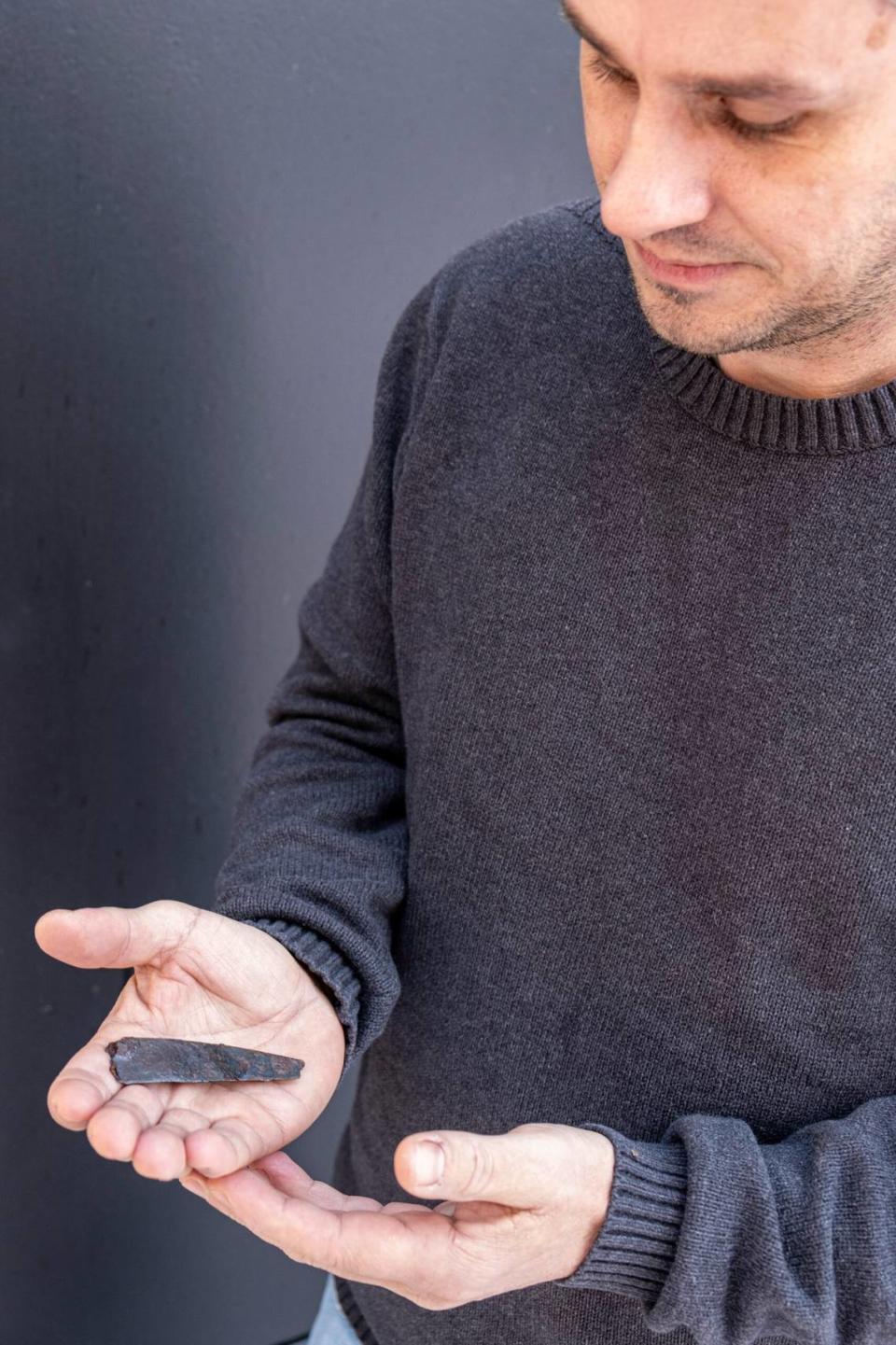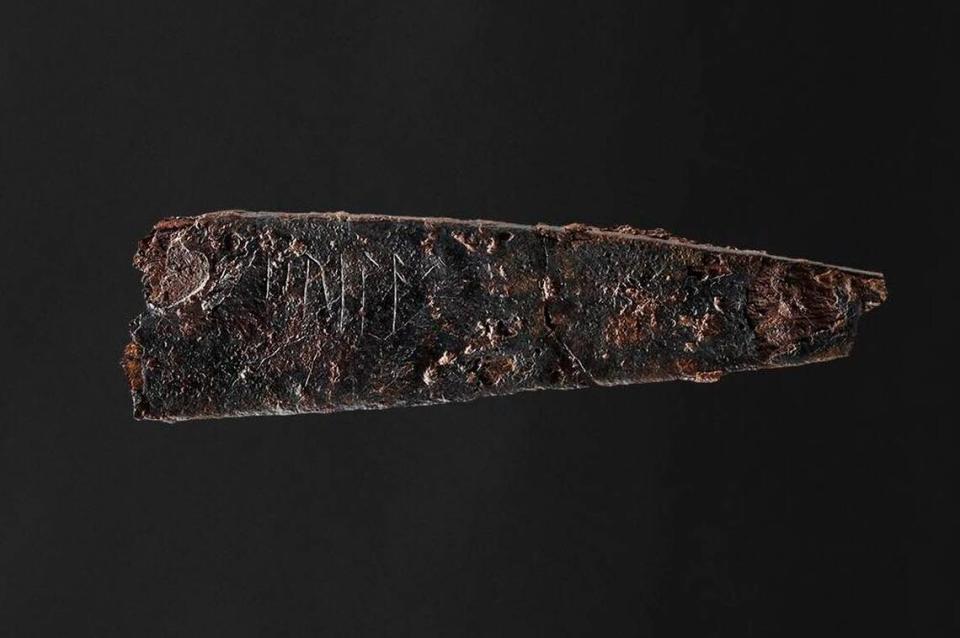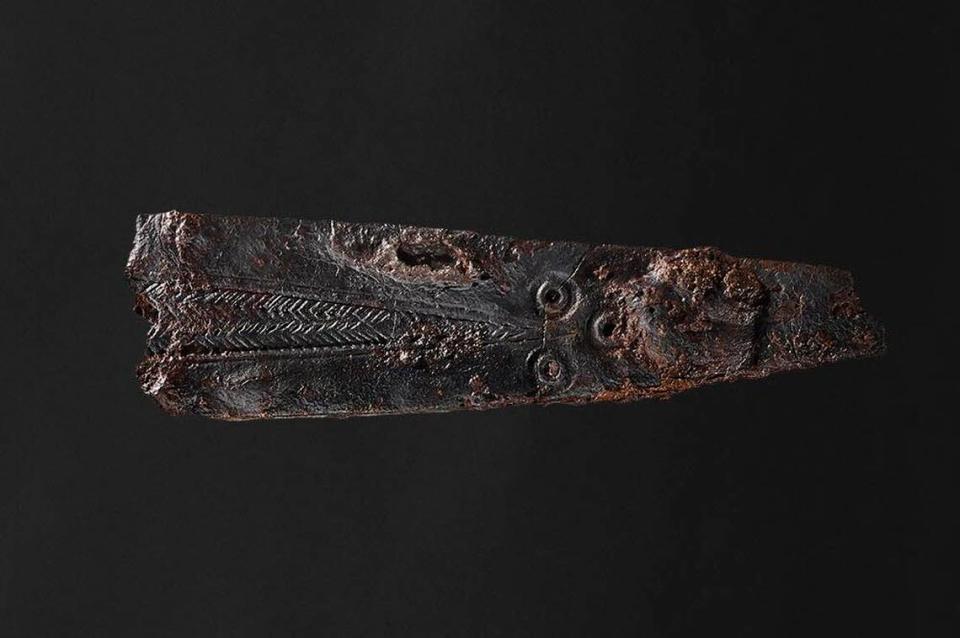Inscribed blade hid under grave for almost 1,900 years — until now. What does it say?
Nearly 1,900 years ago, an ancient inhabitant of what is now Denmark was cremated and buried in an urn. Before they were buried though, a hole was dug and a treasured knife with a special inscription was placed beneath their grave.
That’s where the blade has stayed — until now.
Archaeologists from the Museum Odense recently unearthed the runic blade, according to a Jan. 22 Facebook post from the museum. The discovery marks the oldest known runes in Denmark.

Experts said the small knife dates back to about 150 A.D., and it is inscribed with a message using the oldest known rune alphabet.
The five runes spell the name “hirila,” which translates to “little sword” in Old Norse, the museum said in a news release. Archaeologists are unsure whether “little sword” referred to the blade’s owner or the blade itself.
Photos shows both sides of the blade: one with the runes and the other with an intricate chevron-like pattern followed by three holes.


The grave and knife were found in Tietgenbyen, less than 10 miles from the site where a similar discovery was made in 1865, experts said. That’s when archaeologists unearthed a comb from the same time period with a runic inscription meaning “harja.”
Archaeologists said the knife was likely a treasured possession to its owner.
Google Translate and Facebook were used to translate a news release and Facebook post from the Museum Odense.
1,700-year-old metal object — ‘one of archaeology’s great enigmas’ —unearthed in UK
Rare 700-year-old piece of armor unearthed near castle in Switzerland, photos show
Treasure-filled grave belonging to a teen girl and child unearthed after 1,300 years


